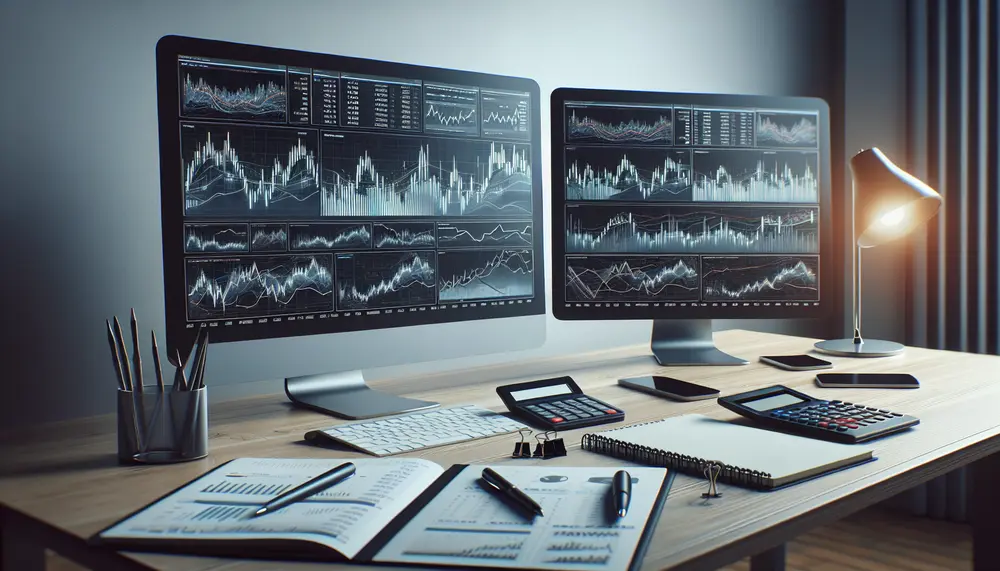Volume Indicator
Volume Indicator
When you're new to trading, the market's abundant terms and jargons could be hard to grasp. However, it's crucial to understand these concepts to make informed decisions. Today, we use this space to simplify one such term: the Volume Indicator.
Understanding the Volume Indicator
In trading, a Volume Indicator is an essential tool that shows the total quantity of a security traded over a specific time frame. It can be for any type of security: stocks, futures contracts, options, or even cryptocurrencies. The indicator reflects the market's activity level and reveals investor interest in a particular security.
Purpose of a Volume Indicator
The Volume Indicator serves two main purposes in trading. Firstly, it confirms the trend direction by showing whether investor sentiment aligns with the trend. So, if the prices are rising and trading volume is also high, it suggests a robust uptrend. Conversely, a price fall with high trading volume points to a strong downtrend.
Secondly, the Volume Indicator can spot potential reversals or price changes. If the volume contradicts price changes, it may signal a possible trend reversal. For instance, if prices raise but volume doesn't, it hints at a weakening uptrend, potentially foretelling a reversal.
Types of Volume Indicators
There are several types of Volume Indicators in trading, each with distinct characteristics. Let's highlight the most popular ones:
Volume Oscillator: It measures the difference between two moving averages of volume. This difference can help traders spot any sudden changes in trading volume.
On Balance Volume (OBV): Here, the total volume is added when closing price is higher and subtracted when it is lower. It helps traders to confirm a price movement.
Money Flow Index (MFI): This indicator uses both price and volume to measure buying and selling pressure. It's especially used for identifying overbought or oversold conditions.
Accumulation/Distribution Line (A/D Line): This one uses volume and price to show where money could be flowing. An upward trend indicates accumulation (buying) while a downward line suggests distribution (selling).
Reading a Volume Indicator
Reading a Volume Indicator is pretty straightforward once you grasp the concept. A taller or shorter volume bar represents higher or lower trading volumes, respectively. If you spot a big price change coupled with a significant boost in volume, it reinforces the impact of that price move. Lack of volume during a price rise or fall, however, suggests little investor faith in the ongoing trend.
Wrapping up, the Volume Indicator is a cornerstone in trading, enabling traders to confirm market trends and anticipate potential reversals. A proficient trader will habitually consider volume before making any trading decisions. Remember, the most valuable trader in the market is an informed one.
Blog Posts with the term: Volume Indicator

Bitcoin trading analysis involves understanding market behavior and using data like transaction histories, price charts, and volumes to predict price movements through technical or fundamental analysis. Technical analysis focuses on patterns in past data to forecast future prices, while fundamental...

The MACD Indicator is a powerful tool used by traders to predict market momentum shifts. It consists of three main components: the MACD line, the signal line, and the MACD histogram. By understanding and effectively using the MACD Indicator, traders...

Cryptocurrency trading can be overwhelming for beginners due to market volatility, but understanding technical indicators can make the process less confusing. Technical indicators are statistical tools that help traders interpret and predict price movement trends in financial markets, categorized into...

Kraken is a secure and user-friendly cryptocurrency trading platform suitable for both beginners and experienced traders, offering robust security measures, compliance with regulations, and a wide selection of digital currencies. The article guides new users through the basics of crypto...

Altcoin trading involves exchanging cryptocurrencies other than Bitcoin, with market forces like supply and demand affecting prices; traders must understand these dynamics and manage volatility in a 24/7 market. Selecting the right altcoins for one's portfolio requires research into fundamentals,...

Crypto market analysis involves evaluating factors like market sentiment, technological developments, and regulatory news to understand cryptocurrency price movements; key skills for analysts include analytical thinking, technical proficiency, attention to detail, communication skills, adaptability, and understanding of market trends using...

The EMA trading strategy in crypto uses the Exponential Moving Average to capitalize on quick price movements by identifying potential trend reversals, with EMAs acting as dynamic support and resistance levels. Traders choose different EMA time spans based on their...

Bitcoin trading charts are crucial for interpreting market data and making informed decisions, displaying price movements over time with various forms such as line, bar (OHLC), and candlestick charts. These charts help traders identify trends using different time frames, price...

Cryptocurrency trading involves understanding blockchain technology, the difference between fiat and digital currencies, market volatility, and various trade types. A successful strategy requires setting clear goals, interpreting market indicators, managing risks with stop-loss orders and diversification, and continuous learning to...


